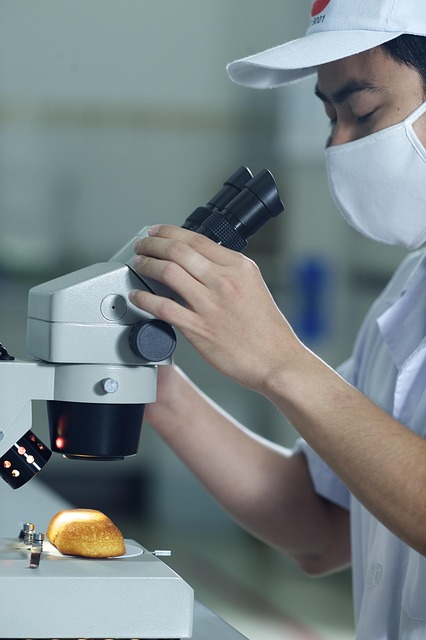Microbial monitoring techniques for safer consumables
Microbial monitoring helps producers and distributors detect contamination risks and protect food quality across the supply chain. This article outlines practical monitoring approaches that support freshness, safety, and traceability while addressing perishability and logistical challenges.

Microbial monitoring is a practical layer of protection for food and drink throughout sourcing, processing, storage and distribution. Effective monitoring combines routine testing, environmental sampling, and continuous sensor data to identify contamination early, limit perishability-driven losses, and maintain freshness for consumers. Integrating monitoring with preservation strategies, proper packaging and a controlled cold chain helps reduce waste and supports regulatory compliance while improving overall quality.
This article is for informational purposes only and should not be considered medical advice. Please consult a qualified healthcare professional for personalized guidance and treatment.
Testing and detection methods
Traditional culture-based microbiology remains a foundation for detecting pathogens and spoilage organisms: selective media and colony counts provide specific information on viable populations. Rapid methods such as PCR and immunoassays reduce turnaround time and improve sensitivity for targeted organisms. Emerging on-site diagnostics include ATP bioluminescence for surface hygiene checks and portable qPCR instruments for faster results. Biosensors and microfluidic devices offer near-real-time signals, useful for high-throughput facilities. Combining routine laboratory testing with rapid on-site checks helps manage perishability and supports decisions around preservation and refrigeration.
Cold chain and refrigeration monitoring
Temperature control is crucial for slowing microbial growth in perishable goods. Data loggers, wireless temperature sensors and cloud-based monitoring systems track temperatures through storage and transport, alerting operators to excursions so corrective actions can be taken. Predictive analytics applied to temperature histories can flag high-risk consignments before they reduce freshness. Maintaining an audited cold chain ties into logistics and packaging choices, as different products demand specific refrigeration profiles. Proper refrigeration reduces spoilage-related waste and supports food safety outcomes across the supply chain.
Packaging, preservation, and traceability
Packaging design affects microbial risk by controlling oxygen, moisture and microbial ingress; modified-atmosphere packaging and barrier films can extend shelf life when combined with validated preservation methods. Traceability systems—barcode, QR code or RFID—link each packaged batch to test results, supplier data and handling records, enabling targeted recalls and improving sourcing transparency. Packaging choices also influence sustainability: recyclable or compostable materials must still meet barrier and hygiene needs. Integrating traceability with testing results improves regulatory reporting and consumer confidence in product safety and freshness.
Sourcing, logistics, and sustainability considerations
Upstream sourcing decisions set the baseline microbial risk: supplier audits, environmental testing at farms or processors, and documented handling procedures reduce initial contamination. Logistics planning — including thermal buffering, transit time minimization and validated routes — helps preserve quality during distribution. Sustainability initiatives should consider how reduced waste and improved shelf life can offset packaging footprints; for example, better monitoring that reduces spoilage supports sustainability goals. Local services and reliable third-party testing labs can assist smaller suppliers with compliance and quality assurance in your area.
Regulation, quality assurance, and safety protocols
Regulatory frameworks and voluntary standards (for example HACCP-based programs) require defined testing frequencies, environmental monitoring and corrective actions when deviations occur. Quality assurance programs often mandate swabbing of critical control points, verification testing of finished products, and documentation to demonstrate compliance. Accredited laboratories and standardized methods produce defensible data for regulators and buyers. Clear procedures for sampling, result interpretation and escalation are essential to align testing with safety objectives and to maintain product quality across batches.
Reducing waste and preserving freshness through monitoring
Targeted monitoring helps reduce waste by identifying spoilage trends early and enabling batch segregation before widespread loss. Continuous sensor data combined with shelf-life modeling supports dynamic inventory decisions, such as prioritizing older stock or redirecting shipments to shorter routes. Rapid testing allows verification of preservative efficacy and informs packaging or refrigeration adjustments that prolong freshness. When monitoring data are integrated into logistics systems, it becomes possible to minimize both food waste and the environmental impact of unnecessary disposal.
Microbial monitoring is not a single technology but a layered approach that pairs laboratory methods, on-site checks and digital monitoring to manage safety, perishability and quality. When combined with sound sourcing practices, validated preservation techniques, appropriate packaging and an audited cold chain, monitoring contributes to traceability, regulatory compliance and reduced waste. A robust monitoring strategy supports sustainable operations while helping maintain freshness and consumer safety.





